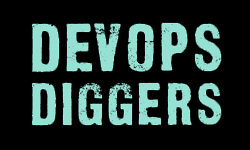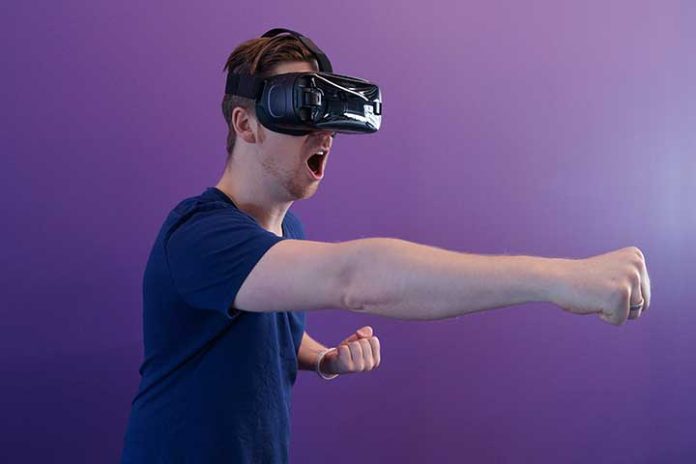The metaverse is a whole new world, a 3D virtual universe where each individual interacts with an avatar to play, work, learn, socialize, and interact with other people. It is a world full of unknowns, also for retail companies that want to enter the metaverse because we still do not know its real impact.
Many people still do not believe (or do not want to believe) that this fourth dimension is going to happen. The idea of the metaverse has to do with the union of the physical and digital world, which we already know as phygital.
If we talk about retail in the metaverse, we first have to remember that the socio-health crisis caused by the COVID-19 pandemic has brought about a great change in consumption habits. These new customs are not temporary but have transformed our purchasing attitude and how we relate to each other. With the new consumption habits, practices that take advantage of the possibilities of digitization and incorporate the importance of sustainability for a better future have been promoted.
These changes affect the youngest, and even people from more advanced generations have dared to use e-commerce platforms and new technologies more after the pandemic. Some experts already estimate that the use of electronic commerce and digital communication “has advanced five years.” An advance has also influenced the arrival of new concepts, such as the metaverse.
How will the retail sector change with the metaverse?
The metaverse is going to change our attitude when it comes to buying products. Retail consumption in the metaverse has infinite possibilities for brands since it allows them to create a new world adapted to their taste. In this way, companies can be shaped to best reflect their values and the brand image they want to show their customers.
In the metaverse, shopping platforms such as shopping centres can be created with an experience that goes beyond what consumers expect from the face-to-face experience since it can be enjoyed in the way that each individual prefers: alone, in the company, with whoever you want to invite or with the rest of the avatars in this immersive environment.
The importance of neuromarketing and Big Data
These opportunities for retail in the metaverse are closely linked to neuromarketing, which has to do with the idea of knowing, understanding, and predicting the reactions and behaviour of consumers in the face of advertising stimuli or communications and making decisions based on it. We must know the individuals we will address well, and more so in this new experience for everyone, where first impressions and sensations will be essential.
In addition to neuromarketing, it is also necessary to understand the meaning of the Big Data concept, which makes it possible to have large amounts of data whose size, complexity, and growth rate make it difficult to capture, manage, process or analyze them using conventional technologies within the time they can be useful.
Big Data enables the development and study of neuromarketing to create suitable and attractive stimuli for each target. It’s a perfect mix of how retail works in the metaverse.
The role of NFTs and cryptocurrencies
NFTs (‘Non-Fungible Tokens’ or non-fungible goods) and cryptocurrencies (Bitcoin, Ethereum, Cardano, Theater…) have a close relationship and play an essential role in these virtual environments. To understand this world, it is important to understand what they are and the differences between NFTs and cryptocurrencies, which are standard payment methods in the metaverse.
A fungible good can be exchanged, distributed, sold, or redeemed… and its value will remain the same. A non-expendable good (NFT) could be compared to a work of art, and it is not equivalent to another; it is unique and cannot be substituted. This is why NFTs are attached to digital works, products, or illustrations, making them unique, and are incredibly rare, adding to their exclusivity. Cryptocurrencies, however, are fungible goods.
The two methods work the same way: a network of decentralized systems with encrypted, tamper-resistant blocks. What makes the difference in NFTs is that they are assigned a certificate of authenticity that records the value of their game, author, and all transactions made with it and guarantees its exclusivity, which makes them more valuable and expensive than cryptocurrencies.
The beginning of the brands in the metaverse
The big brands are already entering the metaverse. For example, Dolce & Gabbana has sold a collection worth $6 million worth of cryptocurrencies, including physical products and NFTs.
Other brands, such as Bershka, have also entered this world by creating a new digital collection through games like Fortnite, where it is possible to buy garments for avatars with cryptocurrencies physically in the store. Even on their e-commerce website, they present the new collection with a prototype of the metaverse that can be dragged to see it in 3D.
Zara also launched a collection for the Zepeto platform (an app from South Korea to chat with other users through avatars), which could also be purchased physically. Some of these garments reached a value of 239 euros in cryptocurrencies.
Nike, for its part, has created its metaverse called Nikeland with the Roblox video game platform, a space with more than 200 million active users to play online video games where the sport is the protagonist. On the platform, you can obtain brand clothing and collect outfits in digital versions. They also intend to project this metaverse in real life by making physical movements with our mobile phones that will be recorded in the game.
Another brand that has entered this new world is Adidas, which has also presented three avatars in December 2021 welcoming the metaverse: Bored Ape Yacht Club, PUNKS Comic, and Gmoney, three characters who wear exclusive designs of their brand and can be bought for the value of 0.599 ETHS (more than 950 euros). These avatars were part of ‘Phase 1’ of the brand’s journey into the metaverse. ‘Phase 2’ is much the same as the first, but wearing different models, while ‘Phase 3’ is described as “You. In the metaverse. In creation…”, which leads one to think that it is the end of the stage we are experiencing, making it possible for all people to enter the metaverse and leaving the door of intrigue half open.
Adidas also opens new horizons with the luxury brand, Prada, making art possible in the metaverse through a collective experience. This joint project consists of creating a vectorized digital design of 3,000 works of art (3,000 NFT) from users who must buy their collaboration to be part of the NFT. It will be concluded in January 2023, remaining as it is. Be at that moment. Each share, in turn, can be sold at a bid. Shared proposals and alternatives make this platform a place that honours the spirit of experimentation and creativity of brands.
Walmart, the large American supermarket chain, is also betting on this future retail. It has not published it openly, but it has registered its digital currency with the United States Patent and Trademark Office for members of its online community. It has also applied for a patent for a virtual marketplace authenticated by NFT. Its objective is once again the immersion of retail in the metaverse, with the possibility of making daily purchases without leaving home. The individual is immersed in the supermarket, moving around everything, its shelves, refrigerators, and a personal assistant to whom you can ask questions about the products.
The Vans brand has also created ‘Vans World,’ its metaverse alongside the Roblox skateboarding video game. Each player can customize their scenarios and purchase Vans branded clothing and shoes. It is a virtual space where fashion and skateboarding are combined and where its players will be able to create the first virtual skatepark integrating the brand’s DNA into it.
Even some brands like Pringles have launched their own NFTs; in their case, it was an animated image of a golden potato tube with a total of 50 animations, which started selling for two dollars (just like a physical potato tube) and have already reached 86 dollars, which means a price of 4,300 dollars for the complete figure.
Pizza Hut also released a series of images of pizza slices as works of art. Sales started at 18 cents and ended at $8,824.
These are just a few examples of retail brands that have already taken the first steps in the metaverse. It is a great opportunity for companies to develop in this new panorama full of opportunities and to seek new ways of expressing themselves as brands and individuals, where avatars of different styles can be created, and all stereotypes are broken.
It is about creating unique experiences that would not be possible in the world we now know, open to anyone anywhere on the planet. A metaverse is a tool that will bring brands much closer to consumers.
The mysterious future of the metaverse
As is verified every day, the digital worlds in the metaverse progress and develop in thousands of aspects and alternatives developed by different retail brands that, little by little, are entering a future that can seem overwhelming. There is no shortage of people who question the current idea of the metaverse, such as Elon Musk, who, in an interview with The Babylon Bee podcast, explained that he considers it more of a “marketing strategy than a reality.”
Today, it is true that not all brands are economically capable of creating their metaverse or being part of it, but it is important not to lose sight of its evolution. It is expected that with its development in the future, it will be possible for smaller retail brands to be in this world and express themselves in it according to their brand personality.
Also Read: Technological Trends 2022: Hyper Automation, Virtual Reality And Cybersecurity


